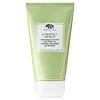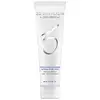What's inside
What's inside
 Key Ingredients
Key Ingredients

 Benefits
Benefits

 Concerns
Concerns

 Ingredients Side-by-side
Ingredients Side-by-side

Water
Skin ConditioningRosa Damascena Flower Water
MaskingSodium Laureth Sulfate
CleansingGlycerin
HumectantDisodium Cocoamphodiacetate
CleansingGlycol Distearate
EmollientAcrylates Copolymer
Cocamide Mea
EmulsifyingCitrus Aurantium Bergamia Fruit Oil
MaskingCitrus Limon Peel Oil
MaskingCitrus Aurantium Dulcis Peel Oil
MaskingCinnamomum Camphora Bark Oil
MaskingMentha Viridis Leaf Oil
AstringentVetiveria Zizanoides Root Oil
MaskingPlumeria Alba Flower Extract
Skin ConditioningMagnolia Acuminata Flower Extract
Skin ConditioningIris Pallida Root Extract
MaskingRosa Damascena Extract
MaskingLinalool
PerfumingLimonene
PerfumingCamellia Sinensis Leaf Extract
AntimicrobialAloe Barbadensis Leaf Juice
Skin ConditioningPolysorbate 20
EmulsifyingLaureth-2
CleansingDipotassium Glycyrrhizate
HumectantSodium Lauroyl Oat Amino Acids
CleansingSodium Sulfate
Hydroxypropyl Methylcellulose
Emulsion StabilisingSodium Cocoate
CleansingSodium Chloride
MaskingSodium Hydroxide
BufferingPentaerythrityl Tetra-Di-T-Butyl Hydroxyhydrocinnamate
AntioxidantCitric Acid
BufferingEDTA
Disodium EDTA
Trisodium Hedta
Methylchloroisothiazolinone
PreservativeMethylisothiazolinone
PreservativeSorbic Acid
PreservativePotassium Sorbate
PreservativePhenoxyethanol
PreservativeChlorphenesin
AntimicrobialWater, Rosa Damascena Flower Water, Sodium Laureth Sulfate, Glycerin, Disodium Cocoamphodiacetate, Glycol Distearate, Acrylates Copolymer, Cocamide Mea, Citrus Aurantium Bergamia Fruit Oil, Citrus Limon Peel Oil, Citrus Aurantium Dulcis Peel Oil, Cinnamomum Camphora Bark Oil, Mentha Viridis Leaf Oil, Vetiveria Zizanoides Root Oil, Plumeria Alba Flower Extract, Magnolia Acuminata Flower Extract, Iris Pallida Root Extract, Rosa Damascena Extract, Linalool, Limonene, Camellia Sinensis Leaf Extract, Aloe Barbadensis Leaf Juice, Polysorbate 20, Laureth-2, Dipotassium Glycyrrhizate, Sodium Lauroyl Oat Amino Acids, Sodium Sulfate, Hydroxypropyl Methylcellulose, Sodium Cocoate, Sodium Chloride, Sodium Hydroxide, Pentaerythrityl Tetra-Di-T-Butyl Hydroxyhydrocinnamate, Citric Acid, EDTA, Disodium EDTA, Trisodium Hedta, Methylchloroisothiazolinone, Methylisothiazolinone, Sorbic Acid, Potassium Sorbate, Phenoxyethanol, Chlorphenesin
Water
Skin ConditioningSodium Laureth Sulfate
CleansingAcrylates Copolymer
Jojoba Esters
EmollientGlycerin
HumectantCocamidopropyl Betaine
CleansingMannitol
HumectantCellulose
AbsorbentSpiraea Ulmaria Extract
AstringentDisodium Cocoamphodiacetate
CleansingCocamidopropyl Hydroxysultaine
CleansingTocopheryl Acetate
AntioxidantNiacin
SmoothingNiacinamide
SmoothingCaprylyl Glycol
EmollientLaureth-2
CleansingHexylene Glycol
EmulsifyingSodium Sulfate
Disodium EDTA
Ammonium Lactate
BufferingSalicylic Acid
MaskingHydroxypropyl Methylcellulose
Emulsion StabilisingSodium PCA
HumectantBiosaccharide Gum-1
HumectantButylene Glycol
HumectantSodium Chloride
MaskingSodium Hydroxide
BufferingPhenoxyethanol
PreservativeEthylhexylglycerin
Skin ConditioningBenzoic Acid
MaskingParfum
MaskingCI 77289
Cosmetic ColorantCitronellol
PerfumingHexyl Cinnamal
PerfumingLimonene
PerfumingLinalool
PerfumingWater, Sodium Laureth Sulfate, Acrylates Copolymer, Jojoba Esters, Glycerin, Cocamidopropyl Betaine, Mannitol, Cellulose, Spiraea Ulmaria Extract, Disodium Cocoamphodiacetate, Cocamidopropyl Hydroxysultaine, Tocopheryl Acetate, Niacin, Niacinamide, Caprylyl Glycol, Laureth-2, Hexylene Glycol, Sodium Sulfate, Disodium EDTA, Ammonium Lactate, Salicylic Acid, Hydroxypropyl Methylcellulose, Sodium PCA, Biosaccharide Gum-1, Butylene Glycol, Sodium Chloride, Sodium Hydroxide, Phenoxyethanol, Ethylhexylglycerin, Benzoic Acid, Parfum, CI 77289, Citronellol, Hexyl Cinnamal, Limonene, Linalool
Ingredients Explained
These ingredients are found in both products.
Ingredients higher up in an ingredient list are typically present in a larger amount.
Acrylates Copolymer is used as a film-forming agent and texture enhancer.
After applied, Acrylates Copolymer forms a thin film cover that helps skin feel more soft. It can help sunscreens become more water-resistant.
It is also used to make a product more thick.
Learn more about Acrylates CopolymerDisodium Cocoamphodiacetate is a surfactant and helps cleanse skin. It is created from the fatty acids of coconut oil.
Surfactants help rinse oil, dirt, and other pollutants easily from skin. It has a faint fruit-like scent.
Disodium EDTA plays a role in making products more stable by aiding other preservatives.
It is a chelating agent, meaning it neutralizes metal ions that may be found in a product.
Disodium EDTA is a salt of edetic acid and is found to be safe in cosmetic ingredients.
Learn more about Disodium EDTAGlycerin is already naturally found in your skin. It helps moisturize and protect your skin.
A study from 2016 found glycerin to be more effective as a humectant than AHAs and hyaluronic acid.
As a humectant, it helps the skin stay hydrated by pulling moisture to your skin. The low molecular weight of glycerin allows it to pull moisture into the deeper layers of your skin.
Hydrated skin improves your skin barrier; Your skin barrier helps protect against irritants and bacteria.
Glycerin has also been found to have antimicrobial and antiviral properties. Due to these properties, glycerin is often used in wound and burn treatments.
In cosmetics, glycerin is usually derived from plants such as soybean or palm. However, it can also be sourced from animals, such as tallow or animal fat.
This ingredient is organic, colorless, odorless, and non-toxic.
Glycerin is the name for this ingredient in American English. British English uses Glycerol/Glycerine.
Learn more about GlycerinThis ingredient is a semi-synthetic polymer created from cellulose. In case you need a refresher, cellulose is the main component of plant cell walls.
Hydroxypropyl Methylcellulose has many uses:
- emulsifier
- create a gel-like texture
- boost foam
We don't have a description for Laureth-2 yet.
Limonene is a fragrance that adds scent and taste to a formulation.
It's found in the peel oil of citrus fruits and other plants such as lavender and eucalyptus. The scent of limonene is generally described as "sweet citrus".
Limonene acts as an antioxidant, meaning it helps neutralize free radicals.
When exposed to air, oxidized limonene may sensitize the skin. Because of this, limonene is often avoided by people with sensitive skin.
The term 'fragrance' is not regulated in many countries. In many cases, it is up to the brand to define this term. For instance, many brands choose to label themselves as "fragrance-free" because they are not using synthetic fragrances. However, their products may still contain ingredients such as essential oils that are considered a fragrance.
Learn more about LimoneneLinalool is a fragrance and helps add scent to products. It's derived from common plants such as cinnamon, mint, citrus, and lavender.
Like Limonene, this ingredient oxidizes when exposed to air. Oxidized linalool can cause allergies and skin sensitivity.
This ingredient has a scent that is floral, spicy tropical, and citrus-like.
Learn more about LinaloolPhenoxyethanol is a preservative that has germicide, antimicrobial, and aromatic properties. Studies show that phenoxyethanol can prevent microbial growth. By itself, it has a scent that is similar to that of a rose.
It's often used in formulations along with Caprylyl Glycol to preserve the shelf life of products.
Chances are, you eat sodium chloride every day. Sodium Chloride is also known as table salt.
This ingredient has many purposes in skincare: thickener, emulsifier, and exfoliator.
You'll most likely find this ingredient in cleansers where it is used to create a gel-like texture. As an emulsifier, it also prevents ingredients from separating.
There is much debate on whether this ingredient is comedogenic. The short answer - comedogenic ratings don't tell the whole story. Learn more about comegodenic ratings here.
The concensus about this ingredient causing acne seems to be divided. Research is needed to understand if this ingredient does cause acne.
Scrubs may use salt as the primary exfoliating ingredient.
Learn more about Sodium ChlorideSodium Hydroxide is also known as lye or caustic soda. It is used to adjust the pH of products; many ingredients require a specific pH to be effective.
In small amounts, sodium hydroxide is considered safe to use. However, large amounts may cause chemical burns due to its high alkaline.
Your skin has a natural pH and acid mantle. This acid mantle helps prevent harmful bacteria from breaking through. The acid mantle also helps keep your skin hydrated.
"Alkaline" refers to a high pH level. A low pH level would be considered acidic.
Learn more about Sodium HydroxideSodium Laureth Sulfate (SLES) is a foaming, cleansing, and emulsifying ingredient. It is created from palm kernel oil or coconut oil. SLES is not the same as sodium lauryl sulfate. It is much milder and less likely to irritate.
SLES helps create foam in personal products. It also prevents ingredients from separating, helping to elongate the shelf life.
Sodium Laureth Sulfate is a type of sulfate. It can be drying. We recommend speaking with a professional about using this ingredient if you have concerns.
Learn more about Sodium Laureth SulfateSodium Sulfate is a type of sulfate.
Water. It's the most common cosmetic ingredient of all. You'll usually see it at the top of ingredient lists, meaning that it makes up the largest part of the product.
So why is it so popular? Water most often acts as a solvent - this means that it helps dissolve other ingredients into the formulation.
You'll also recognize water as that liquid we all need to stay alive. If you see this, drink a glass of water. Stay hydrated!
Learn more about Water